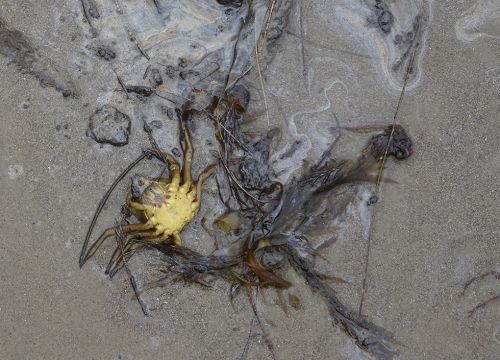Chemical Aquatic Fate and Effects (CAFE) Database
The Chemical Aquatic Fate and Effects (CAFE) database is a software program you can use to estimate the fate and effects of thousands of chemicals, oils, and dispersants. CAFE serves as a tool to help responders in their assessment of environmental impacts from chemical or oil spills into an aquatic environment. Using CAFE, you can choose between four different spill scenarios: chemical, oil only, dispersant only, and dispersants mixed with oil.
CAFE is available in two formats. We encourage you to access the Web-based version. If you do not have an internet connection, you can use the desktop version.
- Web-based CAFE 2.0 ("Web CAFE") - Equipped with new features described below.
- Desktop CAFE for Windows or Mac ("desktop CAFE")
Overview
Data in CAFE are presented in two modules, which can provide complementary information to responders:
- Aquatic Fate module
- Aquatic Effects (Toxicity) module
The Aquatic Fate module provides you with the following information about the pollutant:
- Structure and physical properties (e.g., boiling point, water solubility, molecular weight)
- Environmental fate (e.g., estimated Koc, biodegradation time, partitioning)
In the Aquatic Effects module, you can navigate through a series of steps to produce a Species Sensitivity Distribution (SSD), a curve based on effects (LC50, EC50) for various acute exposure times (1, 2, 3, 4, 24, 48, 72, or 96 hours) or chronic exposure times (5, 10, 15, 20, 7, 14, 21, or 28 days) to a specific pollutant. SSDs are probabilistic models that show the sensitivity of biological species to a chemical or oil.
Also included in CAFE are Short Exposure Risk Reports for a selected number of chemicals, and a User-Added section that allows you to add your own data to SSDs (desktop version only).
Web CAFE
CAFE is available as a Web-based product, Web CAFE, introduced in February 2020, which has the following advantages over the desktop version:
- the most up-to-date data.
- an improved chemical name search engine.
- the ability to save and compare SSD curves for multiple chemicals on one graph, as well as export the data to a CSV file.
- the ability to export toxicity data.
- for those chemicals with too few data points, the ability to create a predictive SSD curve based on Interspecies Correlation Estimate (ICE) modeling.
- formatted for a mobile phone.
- an improved Oil and Dispersant search engine.
- detail pages to learn more about specific oils and dispersants.
- easier locating of the original references.
Desktop CAFE
You can continue to use the desktop version of CAFE, which includes a user-added section that allows you to add your own data for computing SSD curves.
More Information about CAFE
CAFE Fact Sheet [PDF, 410 KB]: Learn more about basic features of CAFE in this short fact sheet. CAFE was developed by NOAA's Office of Response and Restoration, in collaboration with Research Planning, Inc.
Questions: Contact us with your questions, comments, or suggestions for CAFE.
 An official website of the United States government.
An official website of the United States government. 
